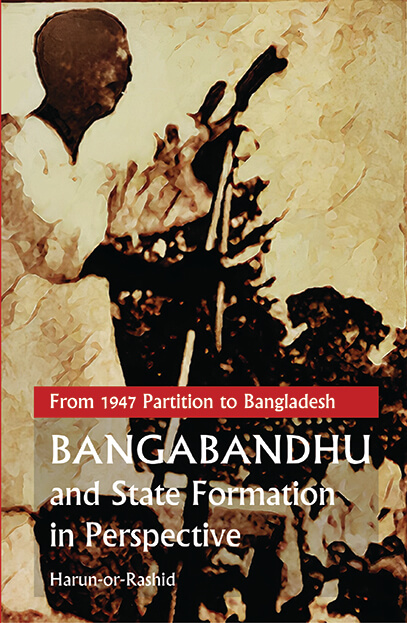- Shop
- Historical
- From 1947 Partition to Bangladesh: BANGABANDHU and State Formation in Perspective
From 1947 Partition to Bangladesh: BANGABANDHU and State Formation in Perspective
https://uplbooks.com/shop/9789845062947-from-1947-partition-to-bangladesh-bangabandhu-and-state-formation-in-perspective-8409 https://uplbooks.com/web/image/product.template/8409/image_1920?unique=337f592
| Language: English |
Tags :
Book Info
Starting from the British colonial rule (1757-1947) through the 1947 partition, creation and subsequent break-up of Pakistan down to the emergence of Bangladesh as a nation state in 1971, the present book is about the state formation in South Asia involving the three countries, India, Pakistan and Bangladesh with a special focus on the creation of the Bangladesh state from a historical perspective. More often than not scholars and academicians raised the question: Was the 1947 Indian partition (un)avoidable? A similar question is raised in the case of Pakistan: Was the break-up of Pakistan and the creation of Bangladesh inevitable? The state of Pakistan that came into being in 1947 was not commensurate with the state vision of the progressive section of the Bengal Provincial Muslim League including Bangabandhu Sheikh Mujibur Rahman, later on the creator of Bangladesh. Then, what was their vision of the state? The book seeks answers to these questions. Along with these, the book may be seen as a treatise on why and how Bangladesh. This is a kind of follow-up to the author's earlier widely read and referred book, The Foreshadowing of Bangladesh being published by UPL. Beyond a long introduction and a modestly drawn conclusion, the book includes 11 chapters under three parts and 7 appendices, which are also very pertinent to the subject matter. It is hoped that the readers will find the book very useful for their further understanding of the gamut of state formations in South Asia especially the creation of the State of Bangladesh in 1971 under the leadership of Bangabandhu Sheikh Mujibur Rahman.

Harun Or Rashid
Harun-or-Rashid is a Professor of Political Science at the University of Dhaka, Bangladesh. He received his B.A.(Honours) and M.A. degrees from the same university and a Ph.D. degree from the University of London. He has also completed a course of study on peace and conflict resolution at Uppsala University, Sweden. He is the author of a number of books and numerous articles published both in the country and abroad. His works include Bangladesh: Politics, Governance and Constitutional Development,1757-2000, (Bangla; Dhaka 2001); 'The Bengal Partition Revisited', Amrik Singh (ed.), The Partition in Retrospect (New Delhi 2000); 'Bangladesh: The First Successful Secessionist Movement in the Third World', Premdas et al. (eds.), Secessionist Movements in Comparative Perspectives (London 1990). The revised and enlarged

Harun Or Rashid
Harun-or-Rashid is a Professor of Political Science at the University of Dhaka, Bangladesh. He received his B.A.(Honours) and M.A. degrees from the same university and a Ph.D. degree from the University of London. He has also completed a course of study on peace and conflict resolution at Uppsala University, Sweden. He is the author of a number of books and numerous articles published both in the country and abroad. His works include Bangladesh: Politics, Governance and Constitutional Development,1757-2000, (Bangla; Dhaka 2001); 'The Bengal Partition Revisited', Amrik Singh (ed.), The Partition in Retrospect (New Delhi 2000); 'Bangladesh: The First Successful Secessionist Movement in the Third World', Premdas et al. (eds.), Secessionist Movements in Comparative Perspectives (London 1990). The revised and enlarged



